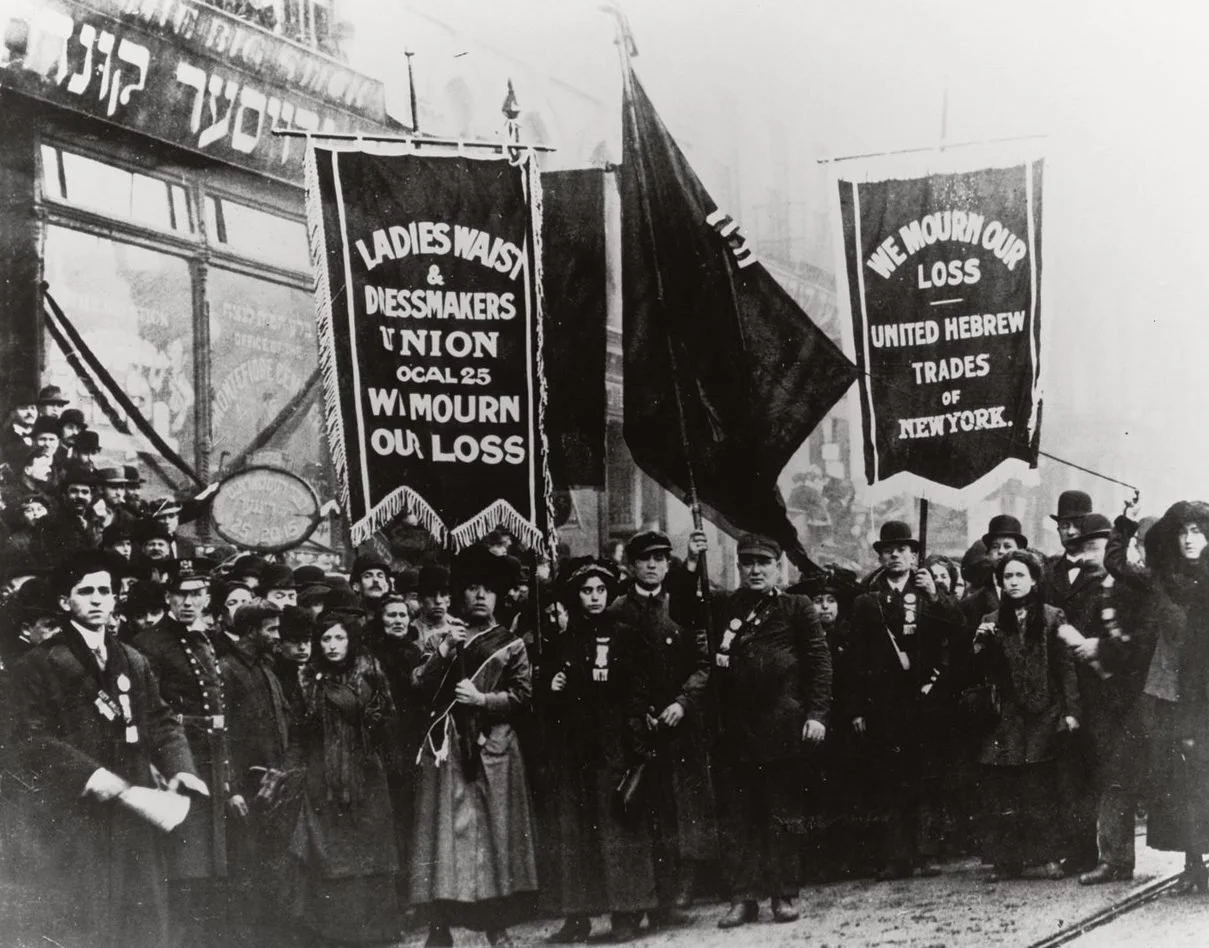On today’s run we head to Greenwich Village to remember the Triangle Shirtwaist Factory Fire of 1911 and the role women played as labor leaders after. On March 25, 1911, at approximately 4:40 PM, a fire broke out at the Triangle Shirtwaist Factory at the corner of Greene Street and Washington Place, just east of Washington Square Park. One hundred and forty-six women and men, mostly recent Jewish and Italian immigrants, many under the age of 20, died in the fire. The fire was a pivotal moment in the nation’s history, informing workplace fire and safety laws, labor policy and laws, uplifting the labor movement, and even influencing building codes.
While the building was able to withstand the fire, almost all manners of egress from the building were faulty. Fire trucks arrived, but their ladders only reached the 6th floor, while the fire burned on the 8th, 9th, and 10th floors. Workers who tried to exit through the fire escape fell to their deaths when it collapsed. On the 9th floor, a critical exit in the stairway was locked. People on the street watched as the workers began to jump out the windows. The elevators ran as long as they could as workers pressed into the cars; some tumbled down the elevator shaft.
The company’s owners, Max Blanck and Isaac Harris, who survived the fire by fleeing to the building’s roof when the fire began, were indicted on charges of first- and second-degree manslaughter for locking the door. They were found not guilty. The Committee on Public Safety was formed in New York City, headed by a young Frances Perkins, and State resources were devoted to strengthening public safety laws.
In a time of mass unemployment, unlivable working conditions, and a renewed push for workers’ rights across American industries, it is worth remembering the pivotal role played by women in the labor movement of the early 20th century.
These young, working, immigrant women, like Emma Goldman, Rose Schneiderman and Pauline Newman, fled the pogroms of Eastern Europe only to struggle against economic, political, and gender-based oppression in the United States. At a time when women were barred from voting, they found a way to transform their disempowerment into action, organizing workers into mass strikes throughout the country and refashioning how working people thought about the value of their own lives.
Spurred by the Triangle Shirtwaist Factory fire, these women changed the course of history in part through the International Ladies’ Garment Workers Union (ILGWU). Once one of the country’s largest labor unions, it was among the first unions in the United States with a primarily female membership. It became a major force in the labor movement of the early 20th century. The ILGWU was racially integrated, and African American women workers were actively recruited by Black organizers like Floria Pinkney. The union flourished, offering members economic security as well as educational programming and community.
As we close out Women’s History Month, let us always remember and appreciate those who stood up for what is right, to provide all women and men, of all backgrounds and colors, equal opportunity. Their goal was to make life better for future generations, and because we still experience these inequalities today, we should learn from their example to do the same.
Thanks for running with us! We look forward to next time!!






